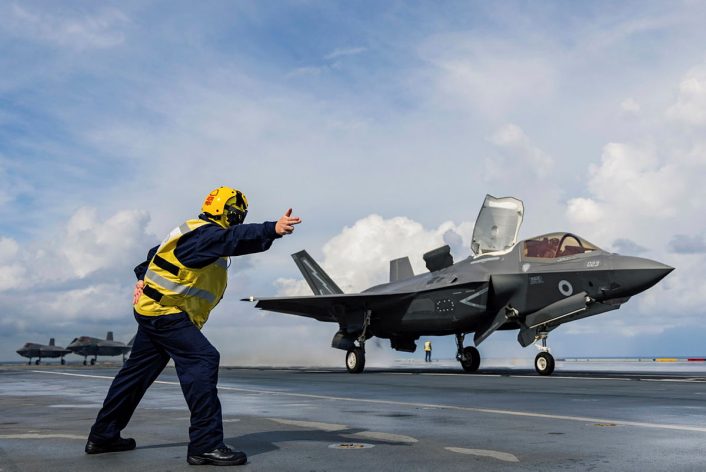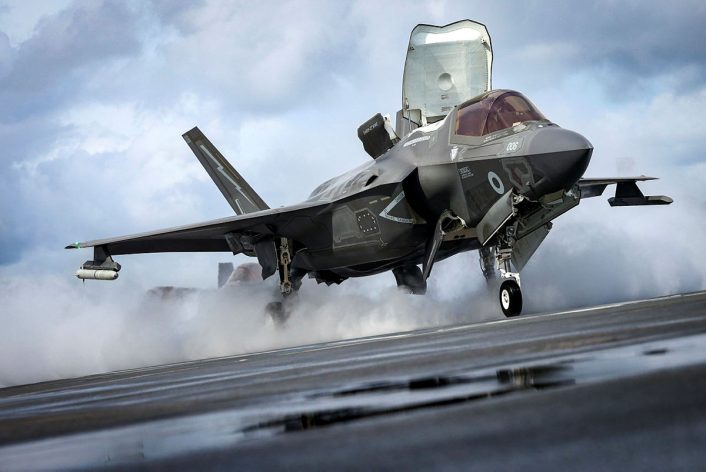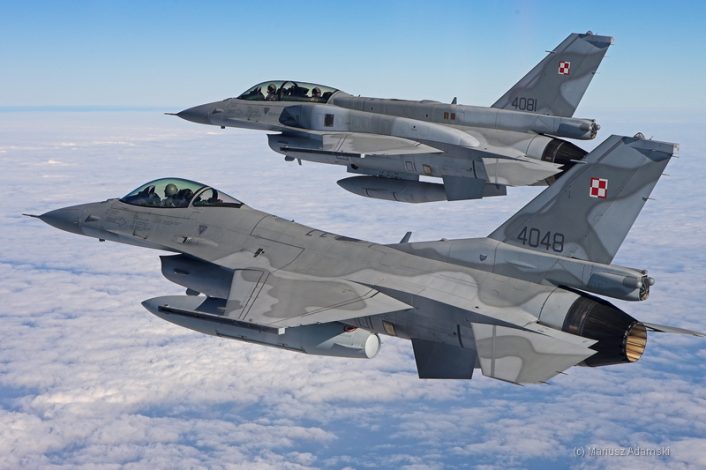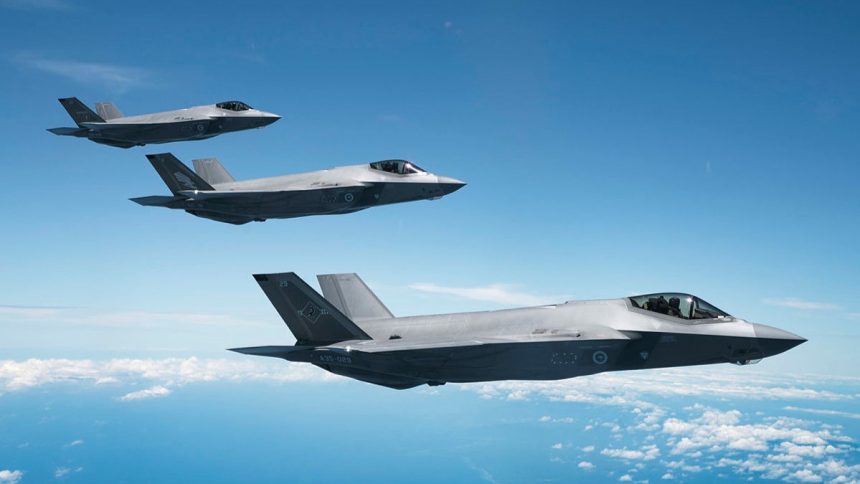The British government has announced it will purchase 12 new F-35A Lightning II fighter jets to contribute to NATO’s tactical nuclear forces.
Prime Minister Sir Keir Starmer is to make the announcement at the NATO summit started on Jun. 24, 2025, that the UK intends to purchase the dual capable aircraft in a move the government has labelled the “Biggest strengthening of the UK’s nuclear posture in a generation”.
They will carry with them the American B61 nuclear weapon, also carried by F-35s and F-16s currently employed by the German, Dutch, Belgian, Italian and Turkish air forces, with all controlled by NATO’s nuclear planning group, although final say on their deployment rests with the U.S. President. In this instance, the deployment of British aircraft will require the Prime Minister’s approval as well, unlike the current submarine based strategic nuclear deterrent that answers only to the Prime Minister.
The UK has always supported @NATO’s nuclear mission, keeping people across the alliance safe.
The UK will purchase 12 F-35A jets, capable of carrying nuclear weapons. The decision will support 20,000 jobs in the UK, with 15% of the global supply chain for the jets based in 🇬🇧
— Ministry of Defence 🇬🇧 (@DefenceHQ) June 25, 2025
The 12 aircraft are to be based at RAF Marham alongside the UK’s current F-35B force, which will operate 47 aircraft once all deliveries are made, not including the fighter that was lost during the 2021 Carrier Strike Group (CSG). The UK was in negotiations for a further 27 F-35Bs, although nothing had been confirmed. In a press release, the Royal Air Force confirmed that the 12 F-35As will be part of this 27-aircraft order, together with 15 F-35Bs.
Additionally, it appears that the F-35As will be mainly used in a training role on 207 Squadron, the RAF’s Operational Conversion Unit (OCU) for the type, other than the nuclear strike role. The press release explains the reasons for this choice:
As the F-35A carries more fuel than the F-35B variant, it can stay airborne for longer, extending the available training time in each sortie for student pilots. As F-35As also require fewer maintenance hours, there will be increased aircraft availability on the OCU. These factors combined will improve pilot training and reduce the amount of time for pilots to reach the front-line squadrons.
The service also mentions that the new aircraft will support the stand-up of a third front line F-35 Lightning Squadron. With the F-35A complementing the F-35B, the RAF says the new fleet “significantly reduces life-cycle costs, meets operational requirements, and improves F-35 Force Generation for Carrier Strike operations.”
The government has also reaffirmed the UK’s intention to purchase 138 F-35 Lightnings over the course of their service life in the RAF and Fleet Air Arm. This had been in doubt for some time, however the uptick in funding may see all 138 aircraft fielded at some point. This also leaves room for more F-35B orders which the Royal Navy requires to completely fill out its carrier air wing without detracting from training squadrons.
BREAKING:
Prime Minister says UK to reacquire tactical nuclear weapons capability.
RAF to buy 12 F-35A jets for nuclear role.
Sources say these jets could also perform the OCU role (pilot training), freeing up additional F-35Bs for frontline duties.
Many complex issues yet… pic.twitter.com/e7Bf1VZkd9
— Navy Lookout (@NavyLookout) June 24, 2025
The announcement from the government highlights that the 12 aircraft were originally intended to be B variants, however this was changed with cost savings being highlighted alongside the importance of the nuclear strike role. Capability wise, the F-35A has an increased range owing to the lack of an additional lift fan for short take-off and landing (STOVL) necessary for carrier operations.
This means the RAF will be able to fight further and for longer with additional fuel tanks in their stead. These aircraft could also fulfil a suppression/destruction of enemy air defenses (SEAD/DEAD) owing to the stealth features of the F-35 and the possible inclusion of SPEAR 3 and SPEAR EW on the aircraft.
Notably, the adoption of F-35A will require a refit to RAF Voyager tankers which are currently unable to refuel aircraft that require a refueling boom. Several commentators have suggested that the RAF is refueling US Air Force and Israeli Defense Force aircraft in the Middle East, however at the moment this is physically impossible as the RAF Voyager does not possess the capability.

Gaining the B61 and the F-35A will return to the RAF a capability that was lost in 1998 owing to the Peace Dividend following the end of the Cold War. The last weapon in RAF inventory was the WE.177 bomb which was similarly employed for NATO’s tactical strike missions.
The RAF had operated in the Nuclear strike role for 43 years, almost a third of the service’s lifetime, with this being the core role for the RAF following the end of the Second World War. As a result, the return of tactical nuclear weapons to RAF aircraft is a momentous moment for the service. However, it also represents a terrible shift in international politics that this procurement is necessary to strengthen the UK’s and NATO’s security posture.
UK to order 12 F-35A Aircraft to carry nuclear weapons as part of a NATO Nuclear Deterrent.
F-35A can carry the B61 Mod 12 Nuclear Bomb which can be used both tactically and strategically.
RAF Voyagers will require booms fitted to refuel F-35A while airborne. pic.twitter.com/oerFzmPvaF
— UK Forces Tracker (@UKForcesTracker) June 24, 2025
On this issue the Prime Minister stated:
“In an era of radical uncertainty we can no longer take peace for granted, which is why my government is investing in our national security, ensuring our Armed Forces have the equipment they need and communities up and down the country reap the benefits from our defence dividend.
The UK’s commitment to NATO is unquestionable, as is the Alliance’s contribution to keeping the UK safe and secure, but we must all step up to protect the Euro-Atlantic area for generations to come.”
Additionally, NATO Secretary General Mark Rutte said:
“The UK has declared its nuclear deterrent to NATO for many decades, and I strongly welcome today’s announcement that the UK will now also join NATO’s nuclear mission and procure the F-35A. This is yet another robust British contribution to NATO”.
Finally, Defence Secretary John Healey highlighted the recent Strategic Defence review, which confirmed that the UK and its allies face new risk from nuclear weapons, recommending that the UK investigate further involvement with NATO’s deterrent system.
The Defence Review had stated:
“More F-35s will be required over the next decade. This could comprise a mix of F-35A and B models according to military requirements to provide greater value for money”
As well as this, “Defence should commence discussions with the United States and NATO on the potential benefits and feasibility of enhanced UK participation in NATO’s nuclear mission.”

The Prime Minister had recently pledged to meet the new NATO spending target of 5% of GDP on national security by 2035 with 3.5% of this being spent on core defense capability, including 12 new AUKUS submarines, new F-35s and possibly more Airborne Early Warning and Control Aircraft. The UK will confirm the new capabilities that are due to be procured later this year.
NATO’s Nuclear Sharing
As mentioned, American B61 nuclear weapons are currently operated by several European states, with their use being controlled by NATO and the US president. However, there has been some controversy following the election of Donald Trump in the U.S. and his bellicose attitude towards European security. This had prompted fears that nuclear sharing would be removed from Europe amongst some member states, but this did not occur.
Polish President Andrzej Duda says Poland wants to host both French and U.S. nuclear weapons in Poland.
5 countries currently host U.S. nukes under NATO’s nuclear sharing program:
🇩🇪 Germany
🇳🇱 Netherlands
🇧🇪 Belgium
🇮🇹 Italy
🇹🇷 Turkey pic.twitter.com/jLTBT5C5n9
— Visegrád 24 (@visegrad24) April 18, 2025
In March of this year, then Polish President Andrzej Duda proposed that the U.S. should share its nuclear weapons with Poland, another operator of the U.S.-made F-16 and F-35. Poland has expressed interest in joining the program for a few years, stemming from Russia’s initial invasion of Crimea in 2014. It is already a participant to the SNOWCAT (Support of Nuclear Operations With Conventional Air Tactics) program in which conventional fighter aircraft support the deployment of nuclear weapons, protecting bomber packages and participating in exercises such as Steadfast Noon.

Whilst the U.S. declined Poland’s proposals, France’s President Emmanuel Macron suggested that France’s deterrence force could be extended to cover Germany and Poland, as well as several other NATO states. France’s official nuclear doctrine includes the defense of Europe as a part of its core national interests that the nuclear deterrent is there to protect, so this is not an unlikely offer.
However, Britain’s pledge to buy F-35As and to operate B61 nuclear bombs shifts the narrative on the U.S. commitment to European nuclear deterrence reaffirming a U.S. role in the defense of Europe.









